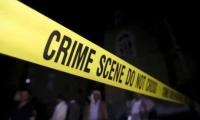In 1988, a US Navy ship shot down an Iran Air passenger jet in which all 290 passengers perished. The ship’s crew claimed that the aircraft appeared to be an attacking fighter plane, ignoring the fact that it was flying in an airway designated for commercial traffic in Iranian airspace and climbing (an aircraft in attack mode would be descending).
When questioned by the BBC for a documentary in the year 2000, the US government responded that it believed the incident may have been caused by simultaneous play on the minds of the crew of what it called, ‘scenario fulfilment syndrome’. This was explained as a psychological condition which occurs when personnel in operations carry out a training scenario believing it to be a real situation and ignoring obvious sensory information, which contradicts the training scenario.
This may probably explain what happened in Sahiwal, when the Counter Terrorism Department (CTD) personnel shot dead four persons, including a woman and a child. Otherwise, the mind boggles as to how someone could shoot an unarmed person 13 times, when he posed no threat, and was helplessly begging for his own and his family’s lives. It gets worse as the victims were already trapped in the car which had been bumped off to the curb by the intercepting vehicle. Murphy’s Law that ‘if things can go wrong, they most likely will’ had undoubtedly taken a complete hold of the CTD personnel.
In organisations such as the Rangers, the police and in this case the CTD, which continuously work under pressure, individuals are part of the larger system. For that system to work effectively, participants are trained ad-nauseum through drills, simulations and live exercises until carrying out their responsibilities becomes their second nature. The CTD, undoubtedly, is under pressure due to recent spate of terrorist activities but managing pressure and stress should be integral to character of its force.
Mentally, the CTD personnel were apparently locked intensely to repeatedly practised drills of eliminating a suspected terrorist on the run. As a consequence, as soon as the suspected car was spotted, their subconscious impulses over-powered their normal selves and led them towards the completion of the scenario they had been practising in training. The supervisory officers’ cadre is supposed to provide safeguards through better judgment, depending on the situation and available information, but unfortunately the Punjab Police officers have too often fallen short in effectively providing those safeguards.
The fine point being made is that the CTD essentially does what it is trained to do. The more it is trained or encouraged in aggressive unaccountable guerrilla war like tactics, the greater leeway it is given for use of force, and the more their training focuses on the possible rather than the probable, the more likely they are to repeat incidents like what happened at Sahiwal, which contradicts their fundamental duty to serve and protect the people. This was best demonstrated in this incident when the CTD was at its aggressive best in dealing with victims who didn’t even look remotely aggressive. The squad was the lowest form of life in the policing profession and dangerously equipped with automatic weapons.
The more the CTD is encouraged to apply disproportionate force, the more often it will be applied. The more force the CTD has to apply, the more it will apply it. The more heavily they are armed and condoned to shun the uniform as happened in this incident, the more they will act like a Delta Force in movies rather than a disciplined urban outfit. The farther our police in general and the CTD in particular, goes in this direction, the more ordinary citizens will get that uneasy and unsettling feeling, where one begins to hear that we live in a police state and alarmingly it starts to make sense because the police are supposed to be in public service and not to act as storm troopers.
The last few years have seen unprecedented expansion and changes in the structure and arming of our law-enforcement forces. There is the Dolphin Force, the Rapid Response Force, the Counter Terrorism Department – you name it and we have it. These entities are civilian by definition, but they have adopted the equipment, weapons, tactics and attitudes of the military. We see them on TV channels wearing bullet-proof jackets, riding IED-proof armoured vehicles designed more for war zones and chasing ‘Chotu or Dacoit’ gangs.
Due to the war on terror, and the arrival of a new generation of criminals on the street, there is a major transformation in policing as we rarely see the policemen use potentially less lethal methods like sticks and batons to deal with urban public disorder. They are seen to resort to tear gas as a first option because that is how they are now trained to break up rowdy crowds, and quite often it doesn’t matter whether the crowd is rowdy or not. In real life, once the training scenario kicks in, every crowd becomes a riot in its mind. It is like giving a man a hammer, and he starts seeing everything as nails. Remember the heaps of empty tear gas canisters on display during the 2014 sit-in near parliament? In most cases, policemen are better armed – but has the collective sense of responsibility of the force matched up with enhanced firepower with which it is now equipped? Perhaps not.
Our successive political governments have been fanatically eager to come down hard on protests, crime and terrorism, and this government is no exception. Everywhere in the world, in the event of a major faux pas, governments are mindful of the morale of the force on whose very existence they depend for furtherance of their foreign policy objectives or internal stability. Interestingly, the captain of the US Navy ship which brought down the Iranian passenger plane was awarded Legion of Merit for ‘exceptionally meritorious conduct in the performance of outstanding service as commanding officer’. This would be shameful for rest of the world but it was expediency for the US. The Punjab law minister in his press conferences dropped a slight hint of defending the actions of the CTD and drew flak from the media.
The problem, however, arises when those in charge of law enforcement eschew better judgement for the sake of indulgence in their wildest fantasies. A case in point is the manner in which Rao Anwar was allowed to operate in Karachi. Oddly enough, leader of the opposition Shahbaz Sharif criticised every aspect of the incident but expressed dissatisfaction about the state of police force in Punjab.
Fortunately, the communication and social media revolutions have brought about a fundamental change in how societies react to such incidents these days. The public is no longer indifferent to such excesses just because it is happening to someone else. The almost spontaneous public outrage at the cold-blooded murders was the driving force behind some speedy actions by the government. But mere suspensions of senior officers, which is now a routine matter after every such tragedy, may not be enough. The fact is that the whole system is rotten and needs to be fixed.
In Sahiwal, it was clearly death by design on the morning of January 19, 2019 when, to paraphrase the words of Abraham Lincoln in his first inaugural address, the ‘better angels of our nature’ were notably absent – but they need not always be.
The writer is a retired vice admiral.
Email: tajkhattak@ymail.com
Land disputes in Kurram date back to the 1930s, with conflicts over grazing rights and access to water
I do not know how things work at school these days, but in my time, we used to read short stories, underline difficult...
Uraan Pakistan initiative offers a roadmap to turn challenges into opportunities, transforming aspirations into...
Automation enables mass production of goods to achieve greater efficiencies and allows pricing them within purchasing...
Election results in other countries last year forced many rulers of past to taste fruits of their karma
On December 21, Trump unleashed fresh salvo, lambasting Panama for its "unfair" canal fees







